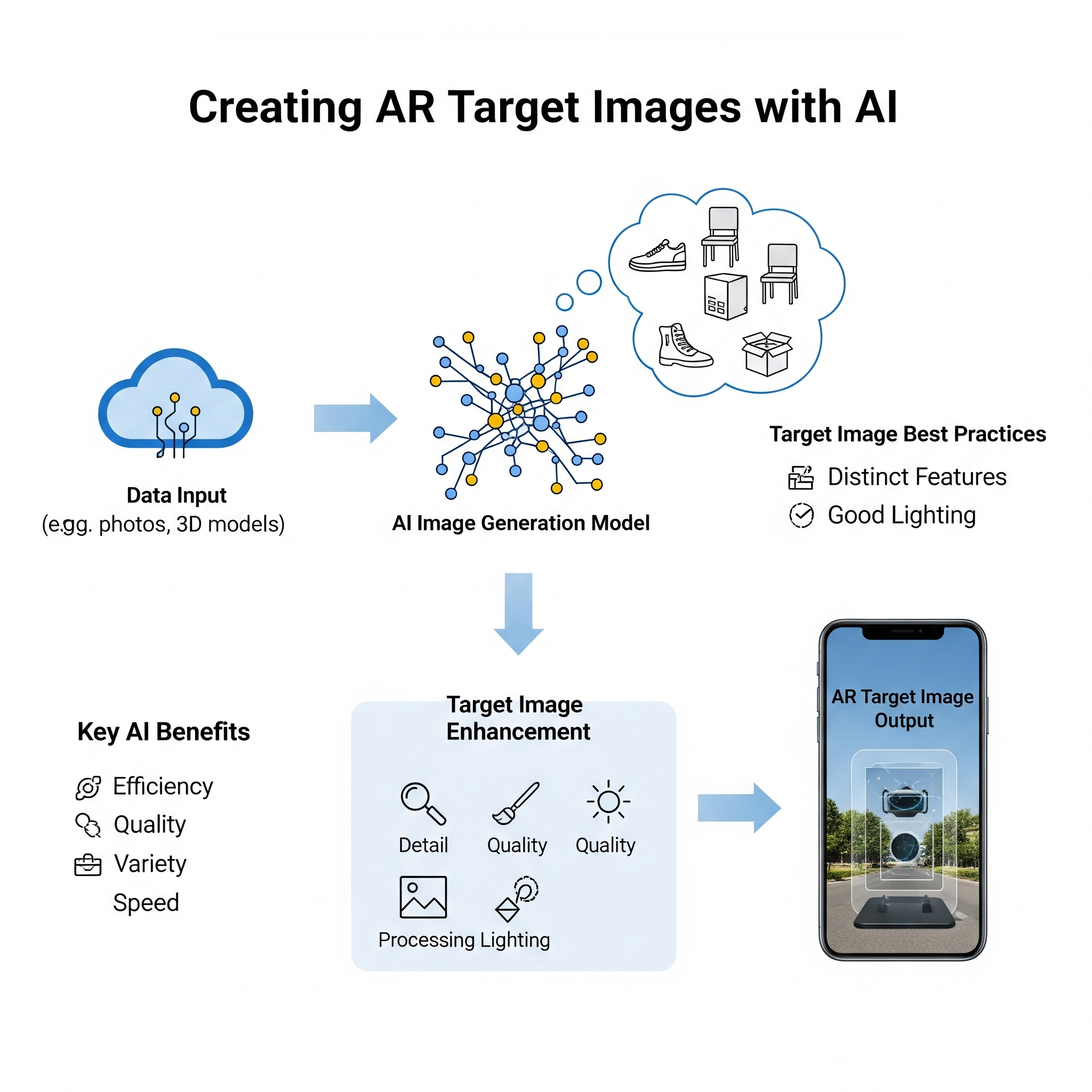
Augmented Reality (AR) is transforming industries—blurring the lines between digital and physical worlds. From product packaging to immersive art, AR experiences captivate audiences in ways traditional media cannot. But there’s one often overlooked detail that determines the success of an AR experience: the target image.
Traditionally, creating target images that are both visually compelling and AR-friendly was a challenge. That’s where AI-generated images step in. By combining AI creativity with UniteAR’s no-code AR platform, anyone can design optimized, interactive experiences—without coding, big budgets, or technical teams.
AI-generated images are digital visuals created by artificial intelligence models that have been trained on millions of examples of text and images. Instead of manually designing an image, you simply type a prompt (a text description), and the AI creates a completely new image based on your request.
For example: Prompt: “A surreal painting of a golden city floating in the clouds, impressionist style.” Output: A high-resolution, original piece of digital artwork matching your description.
The AI can generate anything—from photorealistic objects to abstract art, in almost any style. Popular AI art tools include:
The magic behind these tools lies in complex algorithms, primarily Diffusion Models and, in earlier iterations, Generative Adversarial Networks (GANs).
Diffusion Models Most modern AI image generators like DALL·E 2, Midjourney, and Stable Diffusion are powered by diffusion models. The process works like this:
Generative Adversarial Networks (GANs) GANs were a foundational technology for AI image generation. A GAN consists of two competing neural networks:
Using AI to create AR target images solves several challenges:
Instead of hiring artists or sourcing expensive stock imagery, AI allows you to generate original, brand-specific visuals instantly. Need ten variations of a product-themed artwork? Just adjust your prompt.
AI gives you control over textures, colors, and contrast—key elements for AR tracking. Unlike flat logos or minimal designs, AI visuals can be tailored with enough feature points to ensure reliable AR recognition.
Trying new styles, patterns, or backgrounds is fast and cost-effective.
Marketers, educators, and artists can generate tailored visuals for specific campaigns, audiences, or events—making the AR experience more personalized and engaging.
For artists, AI is not just a tool but a collaborator. It can produce textured, layered, and detailed art pieces that come alive through AR, creating an entirely new medium for storytelling.
The power of AI-generated images lies in the prompt. A vague prompt creates vague results, while a detailed one produces rich, AR-ready visuals.
Weak Prompt: “A car.”
Strong Prompt: “A futuristic electric car, glowing neon lights, cinematic lighting, reflective surfaces, 3D render, high contrast.”
For art-focused AR projects:
Always include texture, contrast, lighting, and style details to generate images that not only look beautiful but also perform well as AR targets.
AI-generated images are more than a creative shortcut—they’re a strategic advantage in building effective AR experiences. By combining the endless creativity of AI with the no-code power of UniteAR, businesses, educators, and artists can create interactive, immersive, and optimized AR campaigns.
With the right prompts and attention to feature points, your AI images won’t just look beautiful—they’ll perform flawlessly as AR targets.
Try generating a textured, detailed AI artwork today and upload it into UniteAR. Your audience will experience your content in an entirely new dimension.